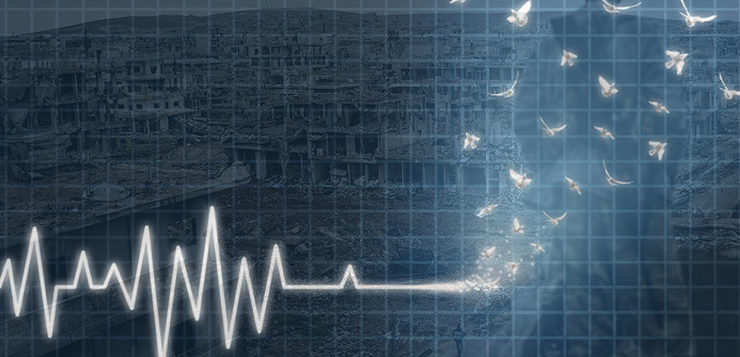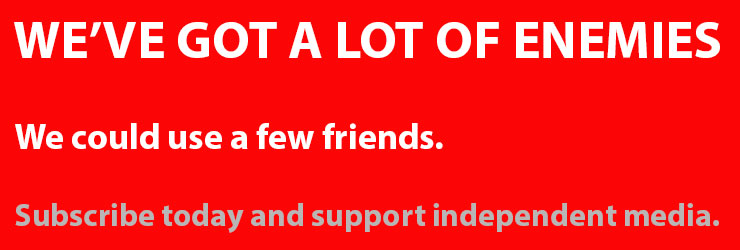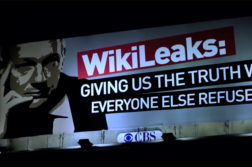Around the world, people are getting sicker, and more and more are dying from entirely preventable causes. We have the answers to why, we just don’t have the will to stop it. In the first of a two part series, Dr Lissa Johnson looks at the greatest cause of global illness and death.
The Lancet recently published an article identifying the single most important action that health professionals can take to promote “health for all”. The article’s recommendations draw on the findings of the World Health Assembly (WHA), the decision-making body of the World Health Organisation (WHO), which has pinpointed the most pervasive cause of ill-health worldwide.
However, scarcely a mainstream health professional in the Western world has heeded the advice of The Lancet or the WHA, which is curious. The Lancet is described by its publisher as the world’s leading independent medical journal. The paper’s author, David McCoy, is Professor of Global Public Health at Queen Mary University London, ranked as one of the top universities in the UK. The WHA is widely regarded as the highest health policy-setting body in the world.
When three leading medical institutions come together to deliver an important message to health professionals, regarding the most powerful antidote to the leading global cause of ill-health, why wouldn’t we prick up our ears? What kinds of illnesses and remedies are The Lancet and the WHA talking about? And what has it got to do with Wikileaks and Julian Assange?
Three women’s stories hold some clues. The United Nations International Children’s Emergency Fund writes, “32-year-old Fatime Hayel wakes up at 6 am every day and sends her husband to fetch water using their three 20-litre jerry cans. ‘After that, I send my kids to garbage dumps and restaurants to search for food and bring it to us for breakfast,’ she says.
“Struggling to hold back tears, Fatime explains how the search for food often stretches to 4-5 hours. ‘My kids would normally return at around 10 am. We eat the food they bring in 15 minutes and then get out of the slum to beg for money’.
“The collection of bottles and metal scrap can take several hours as well. Many children fight over the collected materials or even steal it from one another for the survival of their families. Exacerbating the situation are the pervasive skin problems and deadly diseases they suffer from due to the constant collection of trash with bare hands.”
Zainab Saleh Yahiya, a 28-year-old mother of six living in similar conditions, has taken five of her children to hospital with life-threatening diarrhoea, forced to sell the family’s blankets to pay the $47.94 in medical fees.
In another community, nestled in the heart of a congested slum, “is a single room with cold, bare walls that 33-year-old Nabeelah calls home. Inside, there is one bed, an open toilet and a small kitchen that can barely fit one person…
“Nabeelah is now expecting her fifth child…. Like so many others living in the slums, their survival hinges on what her husband can scavenge from leftovers outside restaurants…. On most nights her children go to sleep hungry. ‘I have no money to take my ailing son to the hospital’ [she says]…. Her youngest son Ali is barely two years old, and is severely malnourished – to the point that his little fingers have curled up. No health workers have visited this forgotten community.”
With one in ten people living on less than $2 a day, the experiences of these women are not unique. But what is the common underlying driver of their ill-health, as identified in The Lancet?
Is it hunger? Poverty? Food insecurity? Lack of housing? Poor sanitation? Pollution? Waste management? Lack of drinking water? Lack of medical services? Lack of social services? Displacement?
It is all of the above. Yet the WHA and Professor McCoy describe another more fundamental factor fuelling all of these things, which is becoming increasingly pervasive worldwide.
Is it climate change? Climate change, according to the WHO, The Lancet, and The Medical Journal of Australia, poses a global health emergency. The WHO Director General has described climate change as the defining public health issue of the 21st century. Climate change threatens health via its effects on crop failure, heatwaves, floods, droughts, vector-borne diseases and climate-related migration, which is expected to affect over 1 billion people this century.
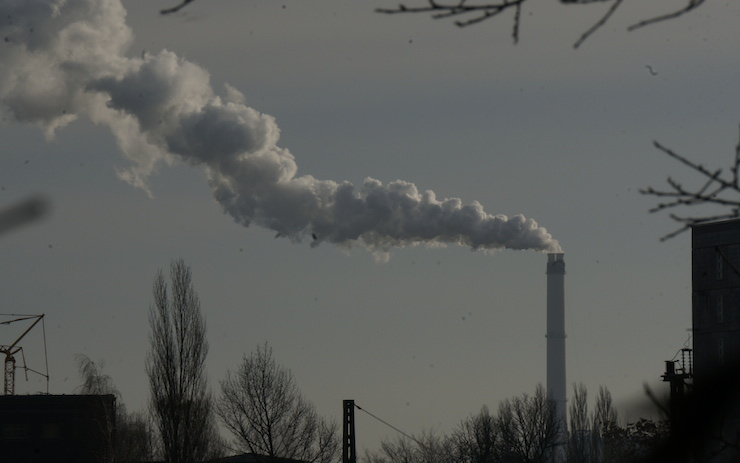
Nevertheless, climate change is not the critical issue named by The Lancet and the WHA. It, like rampant poverty and social breakdown, cannot be meaningfully tackled without tackling one other thing.
What is that? Is it globalisation? Neoliberalism? Unfettered capitalism? Rampant consumerism? Corporate plunder?
Yes, and no. While it is true that corporate capture of the levers of power drives climate change and global poverty, this is not the key target for intervention identified by The Lancet and the WHA.
It is true that the appropriation of 82% of the planet’s wealth-creation by the top 1% does occur at the expense of women like Zainab, who must sacrifice their families’ blankets to cover $47.94 in medical fees. The global increase in billionaires’ wealth in 2017 alone was enough to end extreme poverty seven times over.
This state of affairs, however, could not continue to exist without one other critical thing. It is the same critical thing that The Lancet and the WHA are urging health professionals to address.
What is that thing? It is war.
Re-engaging the health community around peace
Professor of Global Public Health David McCoy reports in The Lancet that, according to the WHA, “the role of physicians and other health professionals in the preservation and promotion of peace is the most significant factor for the attainment of health for all”.
The most significant factor. Peace activism is the most significant action that physicians and other health professionals can take against poor health around the globe. So say The Lancet and the WHA, the highest health policy-setting body in the world.
With the US having recently bombed Syria for an unsubstantiated, uninvestigated and unlikely chemical weapons attack in Douma Eastern Ghouta, exacerbating dangerous tensions with Russia, now seems like a good time for health professionals to heed the advice of The Lancet and the WHA.
It is war that connects Nabeelah, Zainab and Fatime’s families. All three women live in Yemen, where Saudi Arabia has been bombing the Yemeni population since 2015. These women’s families have been internally displaced by conflict, along with over 3 million other Yemenis, and/or forced into starvation by war.
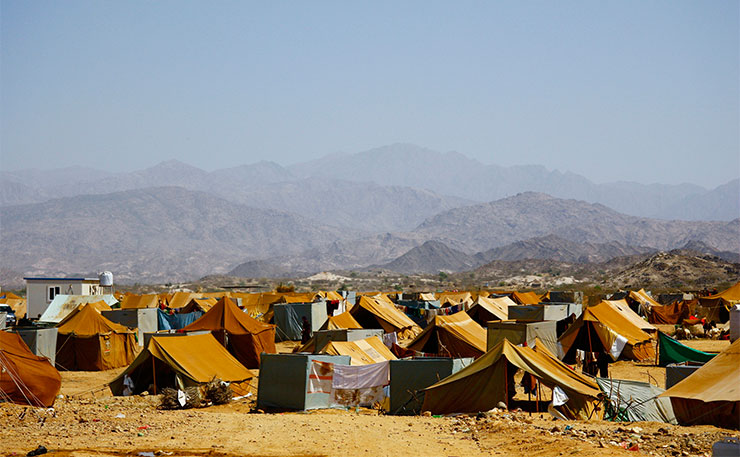
In Syria, 6.5 million people have been internally displaced by war, representing the largest internally displaced population in the world. Prolonging that war with illegal US airstrikes, such as the strikes on April 14th , will do nothing for Syrian people other than bring their existence into closer alignment with the people of Yemen.
In Yemen, 8.4 million people are on the brink of famine and 11 million children, require humanitarian assistance, as do Nabeelah, Zainab and Fatime’s children. These children are not receiving the assistance they need because of a Saudi-led, US, UK and Australia-backed military blockade, using hunger and disease as a weapon of war, in a country that imports 90 per cent of its food and most of its medicine.
Western leaders’ cries of humanitarian concern for the people of Syria to justify airstrikes ring hollow in light of their support for a genocidal atrocity in Yemen, right next door.
Half of Yemen’s medical facilities have been destroyed by bombing, leaving 15 million people with no access to basic medical care. Without doctors or medicine, a cholera epidemic, the worst in the world, has swept the nation, as millions are cut off from clean water, and waste collection in major cities has ceased.
Syria, like Yemen, has experienced “health system collapse” due to war, causing “outbreaks of infections that were previously well-controlled, including measles, hepatitis A, leishmaniasis, poliomyelitis, meningitis and scabies”. As in Yemen, lack of clean water and sanitation has also caused the spread of infectious diseases.
These are the very processes by which war undermines global health, as described by Professor McCoy in The Lancet. He writes, “apart from their direct physical and psychological effects, wars and conflict damage health-care, food, water, and sanitation systems; pollute and degrade the environment; and undermine development. The effect of violence on the global economy in 2014 cost about US$14.3 trillion, equivalent to a hundred times the total official development assistance from rich to poor countries.”
This, not humanitarian salvation, is the outcome of US policies in the Middle East, including the now well-known policy of arming, funding, training and collaborating with jihadists in the region. In Douma, had doctors and medical professionals been relied upon for intelligence, rather than extremist-linked groups, the causes of civilian suffering in Douma would have been more accurately diagnosed prior to Western airstrikes.
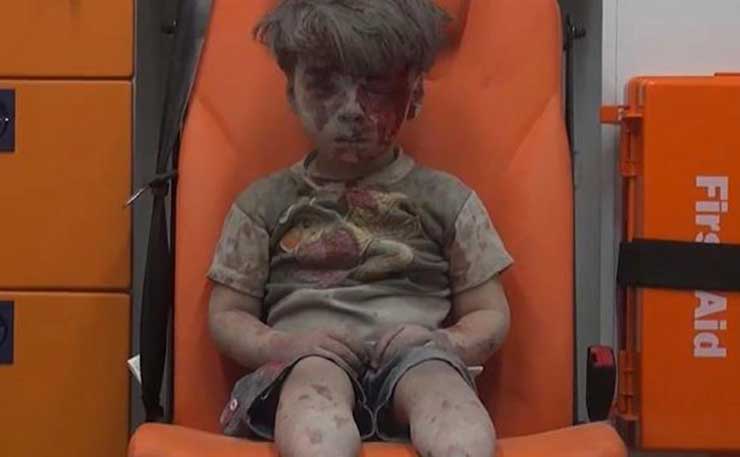
We would have heard early on in the crisis that a key ‘chemical weapons’ video used to justify the US-led strikes on Douma in fact depicted victims of smoke and dust inhalation, not chemical weapons attack. We would have been helped to understand that many civilians in Douma are vulnerable to such respiratory distress following shelling, as war has forced them to live in unventilated “rubbish-filled tunnels and basements.”
This in turn would have prevented the US, UK and France from further exacerbating Syria’s health system collapse with airstrikes that appear to have destroyed research facilities whose purpose was to develop anti-venom, and to test chemicals used in children’s toys.
War and the climate health emergency
In addition to their immediate adverse health effects, McCoy points out that “wars are a source of greenhouse gas emissions and a hindrance to vital international climate negotiations.” Wars thus further damage global health by stoking and entrenching the health emergency that is climate change.
How do wars hinder climate negotiations? Despite the fact that the military is the single greatest institutional contributor to climate change and the world’s greatest consumer of petroleum, under the United Nations Framework Convention on Climate Change, industrialised nations do not include military emissions in their emissions reports. It is a “loophole big enough to drive a tank through”, rendering climate agreements misleading and ineffectual.
The US military also acts as a “global oil-protection service”, sealing the climate’s fate. In recent testimony before the Senate Armed Services Committee, four former US diplomats confirmed that US military involvement in the Middle East has revolved around “the flow of oil”, since the end of World War II to the present day.
The war on Yemen, for instance, is being waged to secure Saudi Control of that country, through whose ports approximately 30 percent of the world’s petroleum is shipped. In Syria, America’s key partner in global oil protection, Saudi Arabia, has pressured the US to provoke Syrian regime-change since the war’s start.
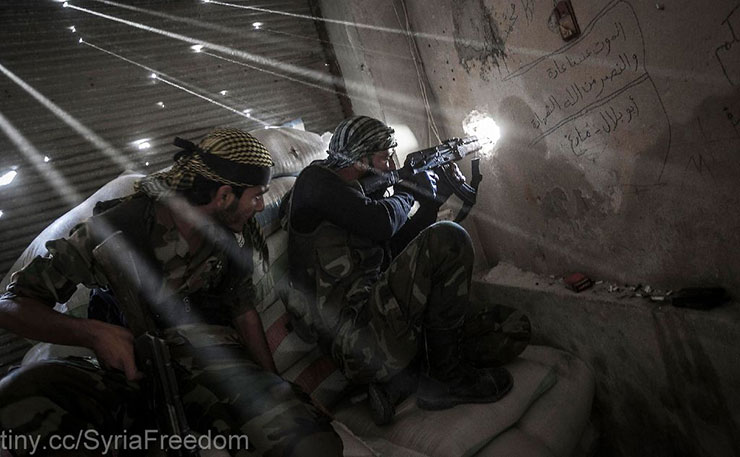
As long as the military continues enforcing fossil fuel interests and resource-extraction around the globe, the climate’s ability to sustain life and health will continue to deteriorate.
Prioritising military spending also kneecaps efforts to address the climate emergency. A 2008 report found that “spending on the Iraq war [alone]could cover all of the global investments in renewable power generation that are needed between now and 2030 in order to halt current warming trends”.
The report noted that “Barack Obama… committed to spending “$150 billion over 10 years to advance the next generation of green energy technology…. The US spen[t]nearly that much on the war in Iraq in just 10 months”. The Iraq war at that time, moreover, emitted more CO2 per year than 60 per cent of countries.
In short, unless war and militarism are confronted, the climate health emergency will proceed apace. As it is, however, the military machine sprawls ever further and wider while, McCoy notes, “peacebuilding has diminished as a subject of concern.”
Perhaps there are simply too many deaths, too many bombs, and too many health emergencies to countenance. McCoy writes, “The 20th century experienced more war-related deaths than the previous four centuries put together.” Since World War II for instance, which was fought mid-last century, the US military has killed approximately 20 million people.
Four million Muslims have been killed since 1990. The ‘war on terror’ has killed 1.5 million civilians. “More wars occurred in 2014 than in any other year since 2000,” adds McCoy. By 2015, Saudi Arabia had begun bombing Yemen, adding the Yemen war to the 2014 list.
In 2015, at the time of McCoy’s Lancet article, he wrote that “the 59.9 million people who are presently refugees or internally displaced because of conflict and violence is the highest number since the end of World War 2.” That number has only continued to swell. In 2016 alone there were 6.9 million new internal displacements due to war and conflict, amounting to 15,000 people per day.
Those 15,000 people are being forced into health emergency, daily, by war. The demise of peacebuilding has been a disaster for these people, but a boon for war.
A health agenda for peace
Given the undisputed and pervasive impact of war on human health, McCoy writes, “health professionals should now re-engage with peace-building and the prevention of war”.
But what has Wikileaks got to do with it? While peacebuilding may have diminished as a subject of concern for many, not so Wikileaks. Despite fierce opposition, including Julian Assange being placed on a “manhunt target list”, Wikileaks has continued to expose the truths of contemporary war, from war crimes to torture, to the corporate motives behind regime change. This provides the raw factual materials for others to oppose war, as The Lancet and the WHA are urging health professionals to do.
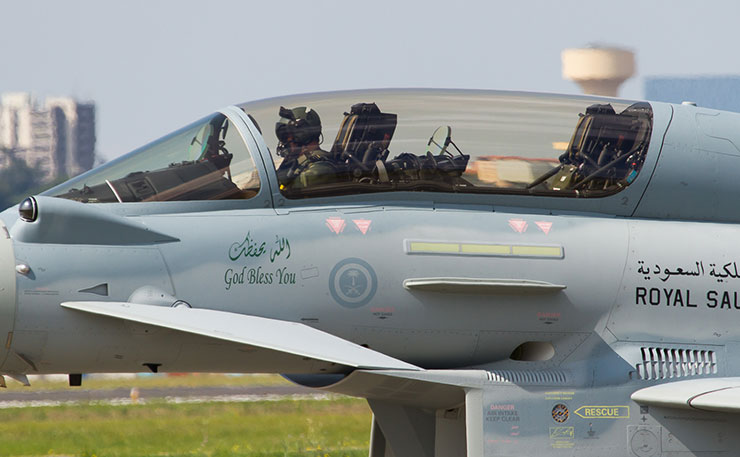
It is Wikileaks, for example, that exposed the detail and extent of US arming, training and funding the war on Yemen in the lead-up to that war. With the majority of Western opinion-shapers turning a deaf ear to these revelations, one child now dies every 10 minutes from preventable diseases in Yemen.
Wikileaks also sought to combat the escalating war that has caused health system collapse in Syria. In 2012 it released the Syria Files, which contained over 2 million emails relating to government business in Syria. Assange described the files as embarrassing to both Syria and its opponents, intended “not merely to criticise one group or another” but to understand the conflict in its complexity. “It is only through understanding this conflict that we can hope to resolve it,” he said.
Mass media disinterest in such complex understanding, however, ensured that simplistic demonization won the day, fuelling the Syrian war and leaving hopes for resolution to the likes of Wikileaks. Perhaps the fact that the US has sought regime change in Syria since 2006, as revealed by Wikileaks, and 1986 before that, has something to do with it.
In the interests of a health agenda for peace, physicians and other health professionals have a role in defending the rights of any publication, such as Wikileaks, that challenges war. This is particularly true in the case of Julian Assange, who the UN has ruled is suffering arbitrary detention – for journalism – while his health deteriorates. Since March 28th his connection to the world has been severed, censoring a critical global source of accurate information on war.
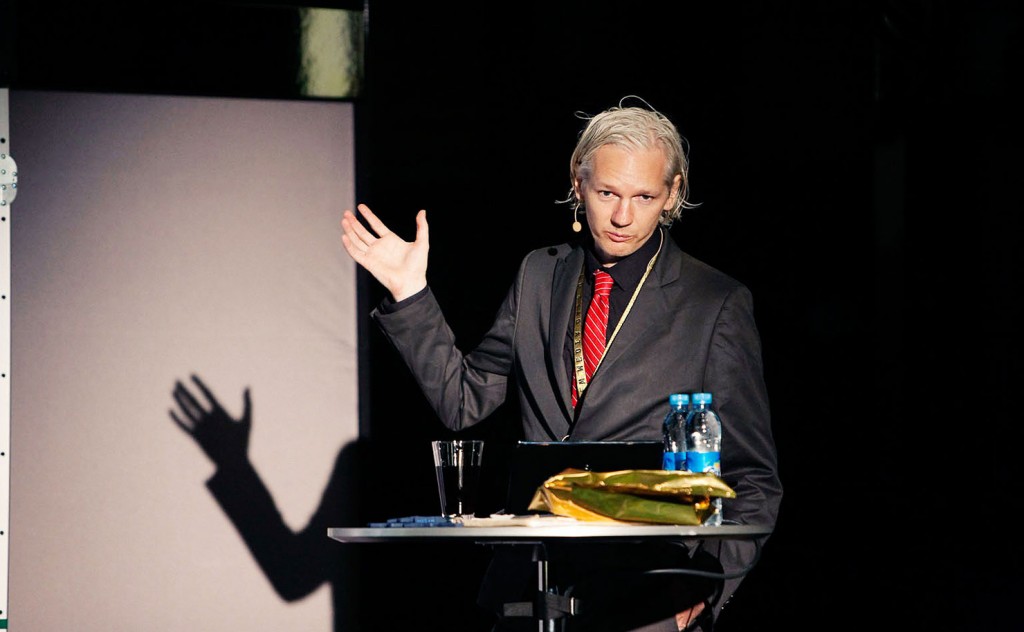
In January this year, three health professionals declared Assange to be in a perilous state of physical and mental health given the conditions of his detention, and have called on the British Medical Association, along with other health professionals, to join them in lobbying on Assange’s behalf.
Given the value of Wikileaks to a health agenda for peace, lobbying on Assange’s behalf amounts to lobbying on behalf of women such as Nabeel, Zianab and Fatime, their children, and the 15,000 other people forced into health emergency by war each day. In addition to Syria and Yemen, Wikileaks has brought attention to the factors fuelling other war-related health emergencies around the world.
In Iraq, the health of the nation is a living nightmare. Iraq is seeing “an ‘alarming’ (according to the International Journal of Environmental Research and Public Health) increase in the number of cases of cancer, leukemia and congenital birth anomalies due to the US army’s use of chemical weapons and dumping of toxic waste, including depleted uranium”. An epidemiological study found that the population of Fallujah suffers the highest rate of genetic defects in any population ever studied. The dust from the depleted uranium used in Iraq will remain radioactive for over 4.5 billion years.
In 2010 the Wikileaks Iraq War Logs revealed, among other things, that US and UK forces treated depleted uranium as dangerous during operations in Iraq, despite the Pentagon and Department of Defense publically declaring it “safe” with “no impact on the health of people and the environment”.
While our leaders are quick to launch a bombing campaign based on social media videos of possible dust and smoke inhalation, depleted uranium is not cause for their concern.
In addition to exposing the deceptions behind war, Wikileaks has worked to cut through the daily mainstream sanitizing and normalizing of war. In 2010 it exposed a “devastating portrait” of the war in Afghanistan, with its Afghan War Diary, involving tens of thousands of files detailing the “thousands of potential war crimes” that comprise war.
In interviews on the files, Assange said that they described “the general squalor of war“; “the continuous small events, the continuous deaths of children”, the very things that our opinion shapers do not want us to see.
After decades of war, the ‘squalor’ in Afghanistan now involves a healthcare system “in tatters” and a population riddled with preventable and/or treatable diseases, including cholera, pneumonia, tuberculosis and hepatitis A and E. Approximately 13 per cent of deaths in Afghanistan are caused by influenza with pneumonia.
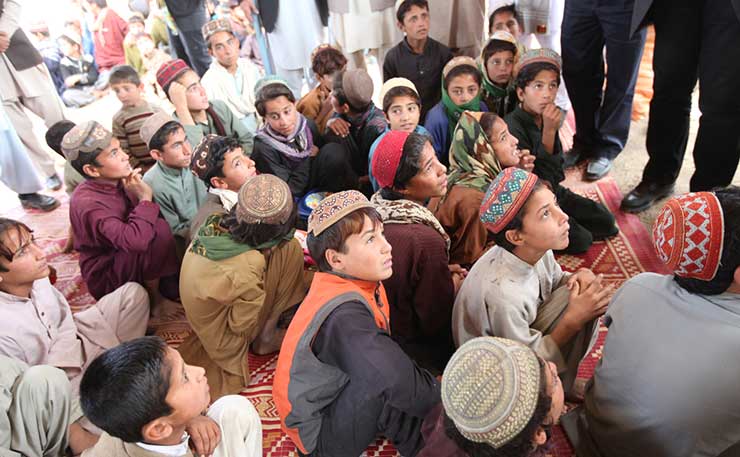
While less outwardly visible than pneumonia, birth defects or cholera, the damage to psychological health caused by war’s squalor cannot be overstated, particularly in children. “For ten year old Kolod”, a Yemeni child, “the gruesome memories of dead bodies flung all around her clubbed with the smell of blood seem to stalk her as she tries to go about her daily existence…. ‘We were so scared. We had to run out of school’, Kolod says. ‘On the way we saw dead bodies and destroyed buildings’. Among the dead were some of her friends from the neighbourhood.”
UNICEF recounts story upon story wrought from the helpless pain of parents whose children have lived traumas similar to Kolod. The deep psychological wounds of seeing one’s children scarred daily by war, unable to protect them, reassure them, or adequately care for them, is unimaginable.
But what is a health professional to do? Even if we could dispatch ourselves to the front lines, in Yemen blockades continue to prevent large quantities of food, medicine and aid reaching Yemeni people, despite the Saudi government promising to lift blockades in December last year. Besides which, wherever the war zone, war is dangerous. We have families of our own to support.
Medicins Sans Frontieres (MSF), for instance, has lost staff to bombing while attempting to help Yemenis caught in that war. Although MSF currently posts almost 2,000 staff to Yemen, the organization is experiencing “growing administrative impediments” to its work, hampering its capacity to deliver aid.
If MSF is struggling, what can the rest of us realistically achieve? The Lancet may conclude that “the medical community needs to build a new health movement around peace and the prevention of war,” but how?
It is this question to which the majority Professor McCoy’s Lancet paper devotes itself. In his article, McCoy advances several specific recommendations for health professionals seeking to promote peace.
In the second of this two-part series, I will detail The Lancet’s advice for health professionals as to how best to combat war. Using current wars and their corollaries as examples, I will contrast the actions of a small minority of peace-building health professionals with the rest of us. I will also explore the criminology of war, and its relevance to health professionals.
Donate To New Matilda
New Matilda is a small, independent media outlet. We survive through reader contributions, and never losing a lawsuit. If you got something from this article, giving something back helps us to continue speaking truth to power. Every little bit counts.

